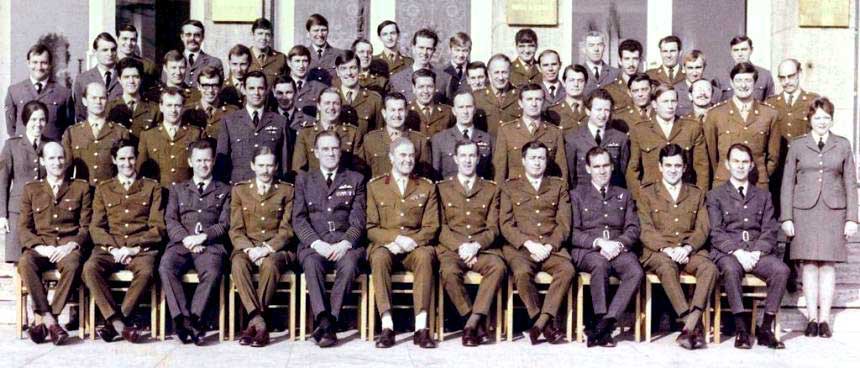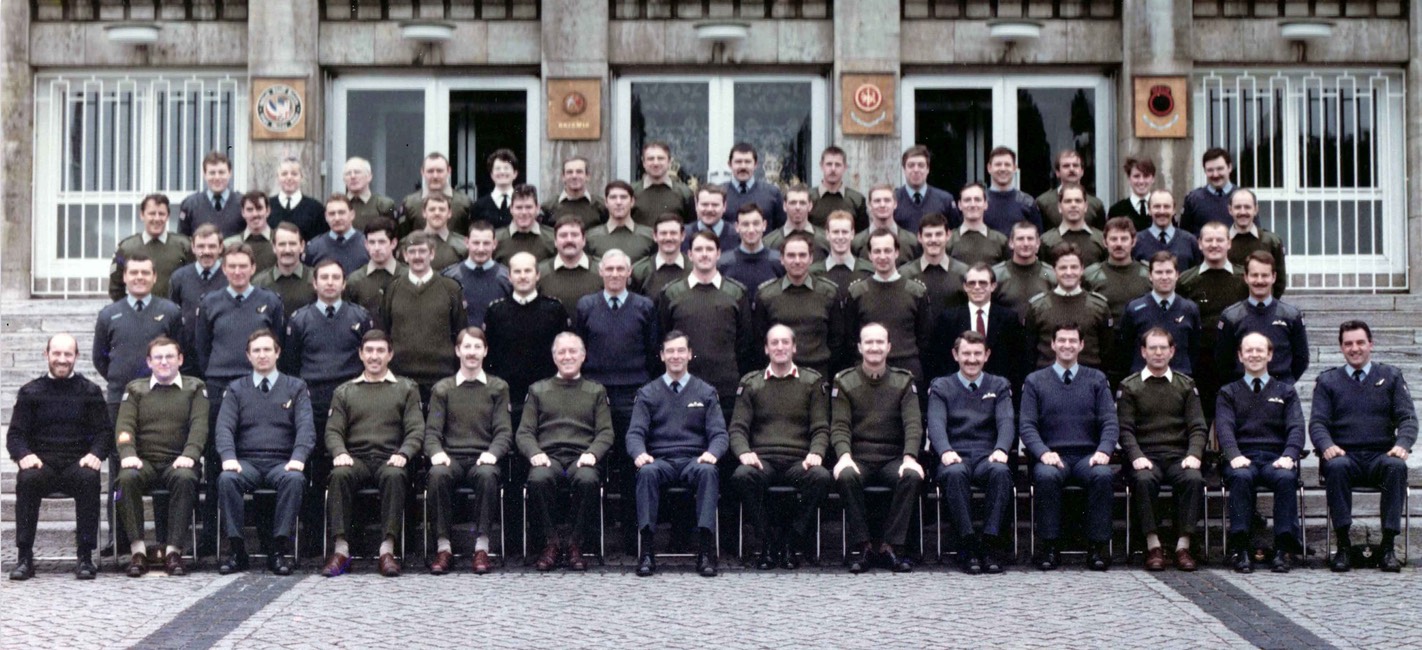1970 - 1990
The Mission House
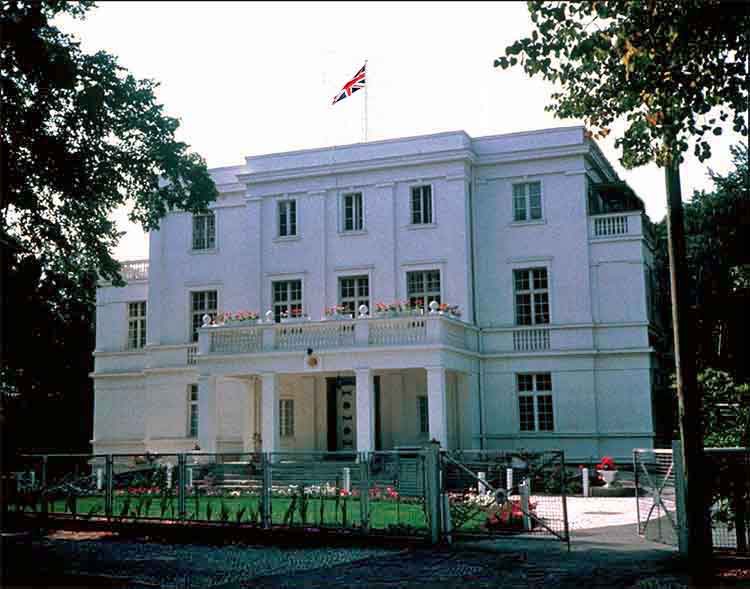
Mission House Potsdam in 1988
After the original Mission House was attacked by a mob in in 1958 a new Mission House was subsequently provided in Potsdam [Map]. The house was built by a Jewish family in about 1890 and it is believed to have been a private house up until WWII. After the war it was a Teachers' Training Language College and they were given three weeks notice by the Soviets to move out and allow occupation by BRIXMIS.
Tour Vehicles
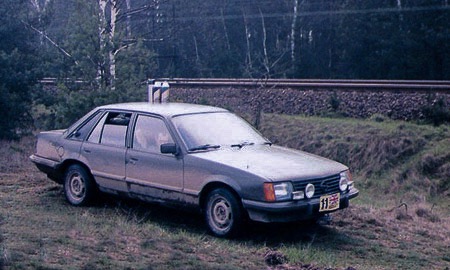
In the 1970s the Opel Admiral, fitted with Ferguson Formula (FF) four-wheel drive, was the tour car of choice and during the 1970s they appeared in various colours. BRIXMIS not only had a white one (see Photos page) but there was also RAF Blue, Maroon, and some other colours from time to time. The idea was to make them look like the new model Volga saloon from a distance, and it worked for a time. The problem was that with a couple of colourful cars on pass at the same time it cut down on the number of drab olive green coloured cars available for tasking, and in the end only the white car was retained as the Deputy Chief of Mission's car. By the early 1980s the standard production model Opel Admirals had given way to the 3.0i Opel Senators. Despite looking more-or-less like normal production saloons, the Senators were far from standard by the time the were handed over to BRIXMIS and painted a non reflective matt olive green. In common with its predecesor every Senator was fitted with Ferguson Formula (FF) four-wheel drive. It also had strengthened suspension and half a tonne of armoured plating under its belly to protect the engine and chassis. Its fuel tank capacity was increased through the use of additional tanks to 180 litres. All the internal surfaces, such as seats, dashboard, trim and roof lining, were blacked out to minimise reflection, and blinds were fitted to the back and rear side windows to darken the interior and make what the crew were doing, difficult to observe.
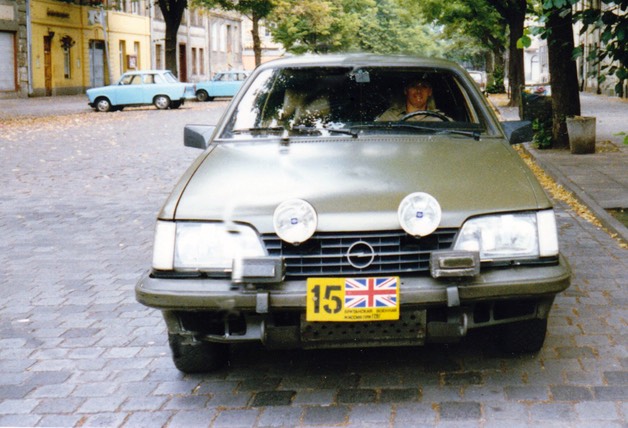
Extra spot lights and map lights were fitted, and the lights over the rear number plates could be switched off. Infra-red and tactical lights were fitted for discreet night driving. The result was a quiet, relatively inconspicuous, long range, fast powerful saloon with good cross-country performance, and the ability to carry a crew of three and all their equipment for several days at a time, in all weather. It was in essence a thorourghbred, albeit rather cramped, touring vehicle, deceptively fragile with a real turn of speed, and even when it was unable to speed away from hostile encounters, it was often given the benefit of the doubt by the opposition when they were considering potentially dangerous acts.
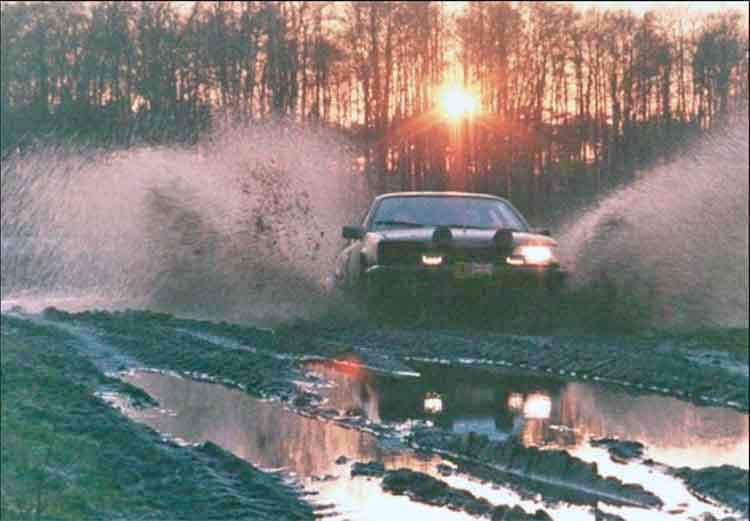
In the 1970s the Range Rover was selected as the ‘Touring Jeep'. It became a particular favourite for the RAF element as its height enabled it to be concealed amongst bushes and low trees, but still provide a good observation platform through the sunroof, from which to observe Soviet air activity some distance away. The Range Rover was also fitted with a power winch, which made self-recovery from boggy ground a much easier task than that faced by Senator crews who used a hand operated winch.
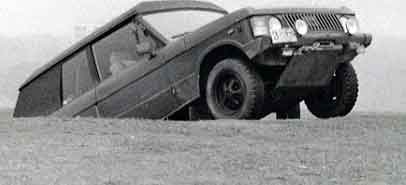
Unfortunately, Range Rovers were drafty and froze up on the inside during the cold East German winters, they filled up with dust in the summer, and they were thirsty on fuel. They were also mechanically highly unreliable, and in the opinion of many tourers they were fine for cutting a dash at a Home Counties gymkhana, but not much use as a real cross country vehicle.
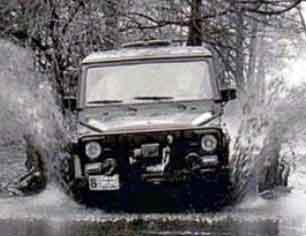
In the mid 1980s therefore the Range Rover was replaced by the Mercedes Gelaendewagen, known affectionately by Tourers as the 'G-Wagon' and by the East German population as the ‘Little Tank'. Shown here, it had had all the good points of the Range Rover and none of its shortcomings, and once fitted with roll bars, rally seats, and had the rear bench seat removed and replaced with a centrally mounted rally seat for the tour officer, it was a first class cross country patrol vehicle. Like its predecessor though it was not inconspicuous and it had large expanses of reflective windows, and it seemed to encourage a more agressive response from both the Soviet and East German military.
[The above texts are based in part on extracts from BRIXMIS in the 80s by Peter Williams OBE]
Mission Photograph 1973
Click image/names to enlarge
Mission Photograph 9 October 1988
Click image/names to enlarge
The Last Mission Photograph 1990
Click image to enlarge
